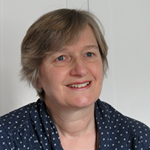March 2020 issue is out now ...
A meditation centre hoping to recruit new staff put a sign on the door saying ‘Enquire within’. Of course, this is a joke – and one that could easily have found its way into the subconscious-themed Scrapbook in this issue. Nevertheless, it seems that, wherever we look these days, we are being persuaded to enquire within ourselves. Mindfulness is being extended to almost every aspect of our lives: my quick Google search resulted in everything from ‘mindful eating’ to ‘mindful dog walking’ – though I think I’ll leave ‘mindful ironing’ to the real devotees.
Mindfulness has also permeated the field of education, despite warnings from some scientists and health professionals that encouraging young children to mask bad feelings and make happiness some kind of learning objective denies them the experience of learning to cope with negative emotions, ultimately leaving them more unhappy, rather than less – and less able to deal with the realities of life.
Nevertheless, readers will find plenty to think about in this issue on the theme of enquiring within. In our main feature, Jason Anderson champions reflection, taking it beyond a rather introspective process in which we critically examine what happened in a lesson we have taught, to a more dynamic process, involving reflection whilst we teach, which has greater potential for enabling us to change direction if necessary.
Learner autonomy – encouraging students to take responsibility for their own learning by reflecting on their strengths and weaknesses and setting themselves goals accordingly – is another ‘enquire within’ concept, currently very popular in ELT and which has a strong advocate in Irina Wing, who is clear that autonomy doesn’t mean doing it on your own without support.
Stephanie Hirschman takes the trend of adult colouring books (colouring black and white images being one of those activities that are intended to promote mindfulness and reduce stress) and turns it into a real language learning opportunity. Her Stonehenge colouring task, with artwork by Amy Alton Bautz, is offered as a sample of what can be done when images for colouring in are combined with a focus on particular language structures.
Allow me to finish as I began – with a joke:
Two old friends meet in the pub.
One says to the other, ‘How is your son doing? Is he still unemployed?’
‘Yes, he is,’ replies the first. ‘But he’s meditating now.’
‘Meditating? What’s that?’
‘I don’t know, but it’s better than sitting around doing nothing!’
Helena Gomm
Editor
Email: helena.gomm@pavpub.com


Comments
Write a Comment
Comment Submitted